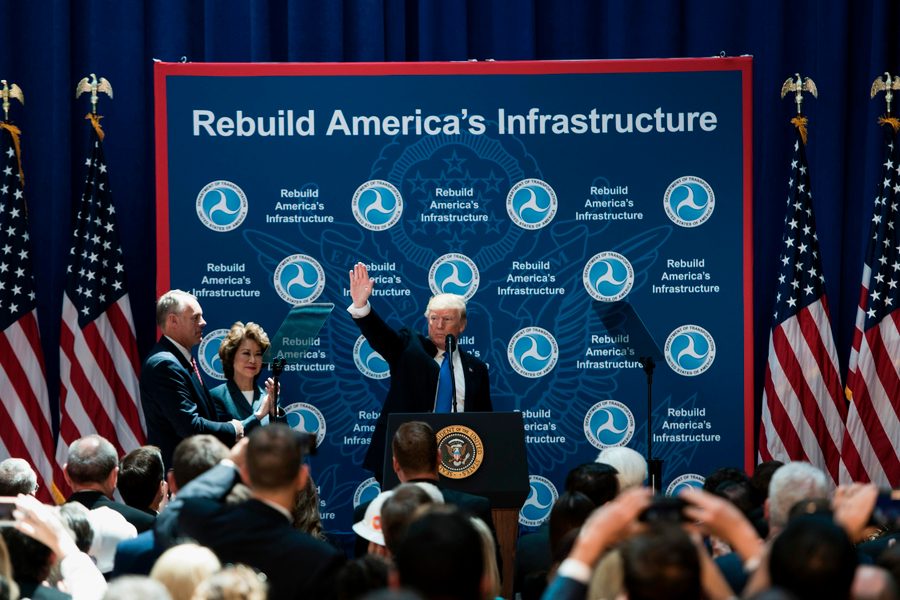The Trump Admin’s Infrastructure Plan Doubles Down on a System That Doesn’t Work
Hunter Blair, Economic Policy Institute

The Trump administration recently released its long-awaited infrastructure plan. Despite claims by administration officials that the plan will provide a $1.7 trillion investment in infrastructure, in fact just $200 billion of federal funds is earmarked over the next 10 years for roads, bridges, airports and other vital infrastructure projects. And this figure will barely make up for the cuts to infrastructure investment that are embedded in the administration’s 2019 budget.
The Trump budget fails to secure funding for the Highway Trust Fund, which would result in a $138 billion hole in resources for infrastructure. And just like last year’s version, the budget also calls for slashing discretionary non-defense spending as a share of the economy by almost half, which would further roll back public investment projects.
The administration claims that the rest of the $1.7 trillion will be left up to state and local governments to cover, but they already pay for the bulk of public infrastructure spending in the United States. Estimates from the Congressional Budget Office (CBO) show that in 2014, state and local governments accounted for 77 percent of public spending on mass transit and rail. State and local governments play their largest role in operations and maintenance, accounting for 88 percent. But they also account for 62 percent of capital investment.
The current system already relies heavily on state and local governments to fund infrastructure, and this system has left us with chronic underinvestment. So it’s not at all clear how doubling down on this system will result in better outcomes.
The federal government does play a more substantial role in funding some specific types of infrastructure. For example, federal funding has historically paid for 80 percent of federal-aid highways, including interstates. Under the administration’s plan, this formula is turned on its head, with states and localities now being asked to pony up the 80 percent, on top of all the other investments they already cover.
So, how are states and localities supposed to come up with this funding? The administration has floated leveraging “private investment” such as public-private partnerships (P3s). But P3s provide financing — structuring funding such as user fees and taxes in a way that allows upfront costs to be paid over time — not the funding itself. If the federal government refuses to provide infrastructure funding, that funding must still be found, and it will be found in the pockets of American households.
After all, private companies will not build our infrastructure for free. Their business model is predicated on getting a return on their investment in the form of profits for the company and its shareholders. To pay back these private partners for their upfront investment, state and local governments will likely be forced to raise taxes, institute tolls or resort to other user fees.
Plus, private management of infrastructure comes with its own host of problems, from non-compete clauses that can hamstring the public’s ability to build needed infrastructure to bailouts that privatize gains and socialize losses. Such problems arise because infrastructure typically has natural monopoly characteristics, with large upfront fixed costs and low marginal costs. This means that in the absence of effective public-sector regulation, private firms will be able to hike tolls or degrade service quality. And the types of projects that are most attractive to private investors are the ones most likely to turn a profit, not the ones that will most effectively serve the public good.
Our nation’s infrastructure is badly in need of investment. And a program of substantial infrastructure investments could bring considerable benefits to the economy. State and local governments already bear the brunt of the public spending on infrastructure, and they deserve a better partner in the federal government. Instead, the Trump administration’s infrastructure plan asks them to do still more. It’s a plan that will be bad news for America.




